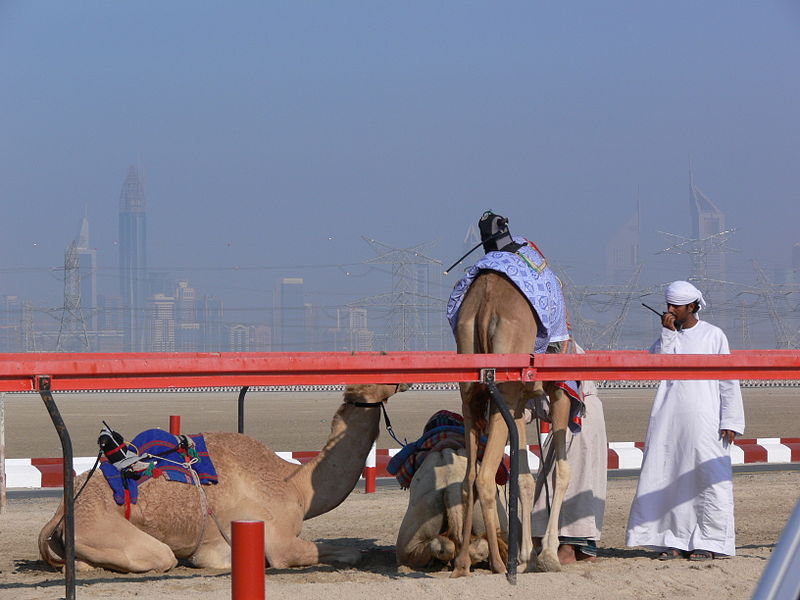Children at the Reins

Camels may be thought of as slow, lumbering animals that slog through the desert. But they’re actually surprisingly fast when not carrying things. A camel can reach a sprinting speed of 40 miles per hour (65 km/hr) and sustain a speed of 25 miles per hour (40 km/hr) over longer distances. To give some sense of perspective, when the horse Secretariat won the Kentucky Derby in 1973 in 1:59.4 — a record which still stands today — he did so at an average speed of about 38 mph (63 km/hr). Given this, it shouldn’t surprise you that in the Persian Gulf region, where camels are common, so is camel racing.
And it will horrify you to learn about some of the jockeys: malnourished children, often under the age of ten, and sometimes much, much younger.
Included in a 2005 report on human trafficking — the buying and selling of people — by the U.S. Department of State (available here) is a section titled “The Facts About Child Camel Jockeys.” The report notes that “thousands of children, some as young as two years of age, are trafficked from Bangladesh, Pakistan, and countries in East Africa, and sold into slavery to serve as camel jockeys.” Further, because the whole idea of a camel race is to make the camel go as fast as possible, the Department of State notes that these children “receive little food and are deprived of sleep so that they do not gain weight and increase the load on the camels they race.” They also are likely to be thrown from the camels in races and in training, suffering severe injuries. This problem is redoubled by the fact that they typically receive inadequate medical care anyway.
While many of the nations have banned the practice of using children as jockeys, the practice unfortunately did not abate immediately. For example, in 2002, the United Arab Emirates outlawed the use of jockeys under the age of 15, but as the BBC reported, there were still an estimated 5,000 child jockeys there two years later, and “the laws are openly flouted, with even televised races showing small boys riding the huge animals.” Another BBC article from early 2005 estimated that there were as many as 40,000 child jockeys in the region generally.
The good news is that the practice is likely going away — not because of the force of law, but because of advances in technology. If you look carefully at the image above, you’ll see that the jockey on that particular camel isn’t a child. It isn’t a human at all. That black thing which looks like a shrunken Darth Vader with a baton is actually a robotic jockey with riding crop. The original versions, developed starting in 2004, look more like actual jockeys — see one here — and were cutting-edge but, unfortunately, they were also too heavy and expensive to find widespread adoption. But the one pictured above typically comes in at five pounds or so (2 to 3 kg) — 10 to 20% of the humanoid-looking ones. As the Telegraph reported, racing camel owners ride alongside the track in SUVs, controlling their robo-jockeys via remote.
Since 2007, Qatar has mandated that all camel races be run by robotic jockeys, and many if not all of the other countries in the region have or are expected to follow suit.
Bonus fact: Camels aren’t native to Australia, but in the 19th century, some were brought there from India, as a means for transportation across the continent where water is lacking. The car and later the airplane rendered camels redundant and inefficient for the job, though, so the camels fell out of use. But camels, unlike cars and airplanes and for that matter, robot jockeys, don’t just sit there and do nothing when left alone. Instead, they make more camels. And now, there are an estimated one million feral camels roaming around Australia.
From the Archives: The Slaves of Tromelin Island: Shared again here because of the bonus fact, which shares some shocking stats and facts on human slavery in the modern world.
Related: “My Librarian is a Camel: How Books are Brought to Children Around the World,” a book about a much better way children and camels interact. Also, “How the Camel Got Its Hump,” a children’s book about curiosity. (I selected this mostly because this comment made me laugh for some reason.)
